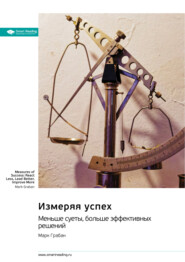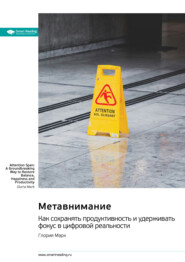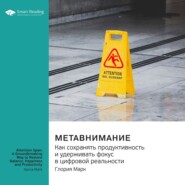По всем вопросам обращайтесь на: info@litportal.ru
(©) 2003-2024.
✖
Summary: Letting go. The Pathway of Surrender. David Hawkins
Настройки чтения
Размер шрифта
Высота строк
Поля
Smart Reading
Smart Reading. Ценные идеи из лучших книг
Notice: This is a SUMMARY of “Letting Go. The Pathway of Surrender” by David Hawkins.
Once you learn to let go of your habitual suppression and condemnation of your feelings, Letting Go shows you how to transform the negative energy of your emotions into positive energy.
Summary: Letting go. The Pathway of Surrender. David Hawkins
Автор:
David Hawkins
Оригинальное название:
Letting go. The Pathway of Surrender
www.smartreading.ru
The Great Energy of Emotions
Throughout the entirety of history, humankind and a large part of the knowledge systems created by it, such as philosophy, literature, medicine, and psychology, have been looking for the most effective way of ridding people of their suffering. But most often the sources of our suffering are found in the world around us and the blame for our dissatisfaction falls on people, places, social institutes, the weather, fate, or even on politicians.
Still there is no single external factor that can cause us as much suffering as our own negative emotions, especially those that have become the main backdrop to our existence and our second nature. When facing these negative feelings we resist them and try to suppress them. We are so used to acting this way that we often fail to notice how it happens and gradually start resisting all our feelings.
Accumulated and suppressed emotions contain energy that is constantly looking for an escape valve and expresses themselves in a chronically stressed state and/or physical and psychological illnesses. But quality of life and the ability to feel joy and happiness can be lost even without suffering a specific illness. A suppressed negative emotion turns into something like a filter, a pair of lenses through which we look at reality.
According to David Hawkins, the practice of just letting go stands out due to its simplicity, efficiency, and lack of disputable claims. Not only do we stop repressing our feelings, thereby freeing ourselves from them, but we also stop resisting positive changes in our lives. We start experiencing more love, while becoming bigger-hearted, kinder, and happier people.
For a long time it was believed that acknowledging emotions was for the weak. Many generations of people grew up with no understanding of which emotions they were experiencing and what they were supposed to do with them. The method for detecting emotions and how to work with them offered in "Letting Go…" could become the foundation for forming psychological well-being of current and future generations. It would have been great to have learned this while we were in school and used it throughout our lives.
Mechanisms for Containing Emotions
We always fight our negative emotions trying to get rid of the worries they cause. We are afraid of emotions primarily because we don’t have a way of living in peace with them. Suppressed emotions accumulate and get driven into the subconscious where it’s very difficult to detect them. At the same time, when they are trapped in the subconscious they bring even more destruction and are even less manageable. The most frequently used mechanisms to protect us from the unpleasant taste of negative emotions are:
▶Suppression and repression. This is the most popular way to either consciously repress or subconsciously suppress emotions. Which feelings we choose suppress or repress totally depends on our conscious and subconscious programming, which are determined by our upbringing, cultural background, and behavioral norms accepted in society. In addition, this process involves two other mechanisms of our psyche: denial and projection. When we fear our emotions and experience shame for feeling them in the first place, we deny the fact that they exist at all. And instead of experiencing these various states of mind, we project them on the world around us and experience our feelings as if they belong to others, and we blame them for our problems. It’s the projection mechanism that is behind the majority of modern wars and outbursts of aggression and cruelty.
You are angry at a colleague because she is inattentive. But you shouldn’t get angry while at work, but rather you should give constructive criticism. That’s why this emotion simply gets repressed as undignified.
▶Expression. In trying to decrease the internal pressure caused by negative emotions, we attempt to express them either verbally, through body language or various actions. Freud’s wrongly interpreted message leads to many people mistakenly believing in the healing power of expressing emotions. In reality, expressing an emotion doesn’t decrease its energy, it only increases it. What’s more, expressing an emotion drives its remains from our conscious and decreases our ability to be aware both of its presence and the influence it will have on on us in future.
After a hard day’s work you come home to a mess, and lash out and shout at your daughter who hasn’t put her things away. This simple expression of anger leads to a deeper level of negative emotions, namely shame.
▶Escape. This mechanism allow you to avoid your own emotions through distraction. The escape mechanism has become the foundation for entire industries of entertainment and alcohol production. All of these escape methods are inefficient and require a lot of energy to contain people’s growing emotional pressure. This gradually leads to our losing the ability to be creative and we then being losing interest in people. The level of our consciousness decreases exponentially and our development eventually stops. What’s worse, some of these methods of escape eventually lead to addiction, diseases or premature death.
Every Friday when you go out with your friends you tend to drown the week’s tension in your wine and engage in lots of unpleasant conversations that lead to unpleasant emotions.
Emotions and Stress
Repression of emotions is tightly connected with the formation of a stressed state. Projection as a post-effect of repression leads to the mistaken belief that the main cause of your troubles is external, and not internal factors.
Our readiness to respond to what’s happening with fear depends on the amount of fear already in us. In other words, the more fear there is inside, the more likely it is that we will perceive the world as a scary place and act defensively.
Basically, a stressed state is a reaction to potential threats to our well-being (real or imaginable). Even in a peaceful environment we are subject to chronic internal stress because all the emotional tension we have accumulated over the course of life continuously seeks a way out. External factors merely allow this energy to manifest itself[1 - Stress hormones include cortisol and adrenalin. These hormones help us survive thanks to suppression of less important body functions in favor of those that are more important for normal functioning.].
In a paper dedicated to body’s response to stress, Dr. Hans Selye and Dr. Walter Cannon describe stress as a "general adaptation syndrome". Our body responds to stressful stimulus by going through several stages sequentially:
▶alarm reaction (or anxiety stage), when stress hormones are released into the blood stream, thereby preparing our body to fight or flee;
▶stage of resistance, when the body attempts to restore balance, in particular through hormonal changes and metabolism activation;
▶and if the stimulus continues it may result in a third stage, exhaustion syndrome. This occurs when the adaptive potential of the body is depleted: the immune system is suppressed and then pathological changes in our organs begin because of the prolonged influence of stress hormones, which ultimately leads to various diseases and death.
Research at U.C.L.A. during the 1980s uncovered a strong connection between stress, immune system suppression and cancer. Regular stress suppresses the immune system, leading to a decrease in the brain’s ability to produce endorphins, which are also called "anti-cancer cells" due to their ability to attack and kill young cancer cells. When the activity of the immune system falters, the number and activity of endorphins decreases, which eventually leads to the proliferation of cancer cells.

















